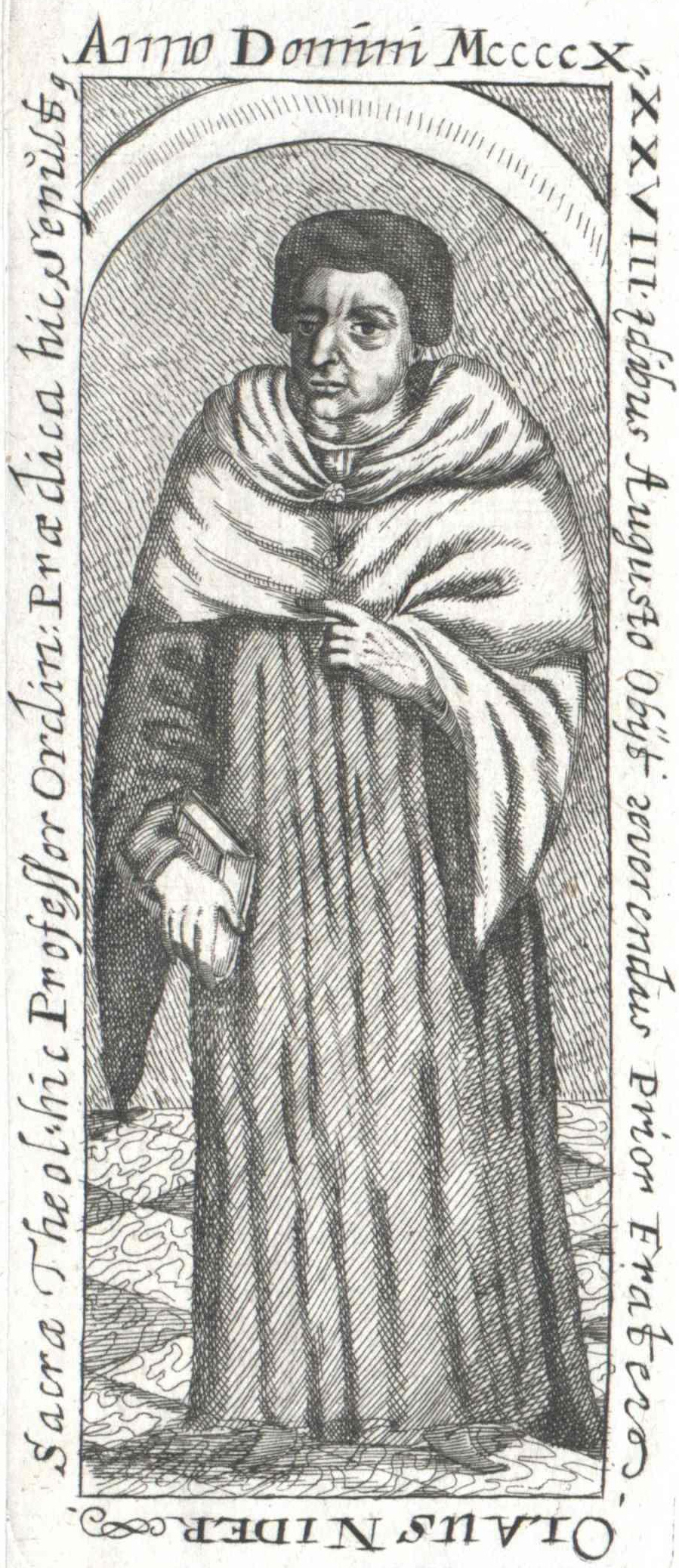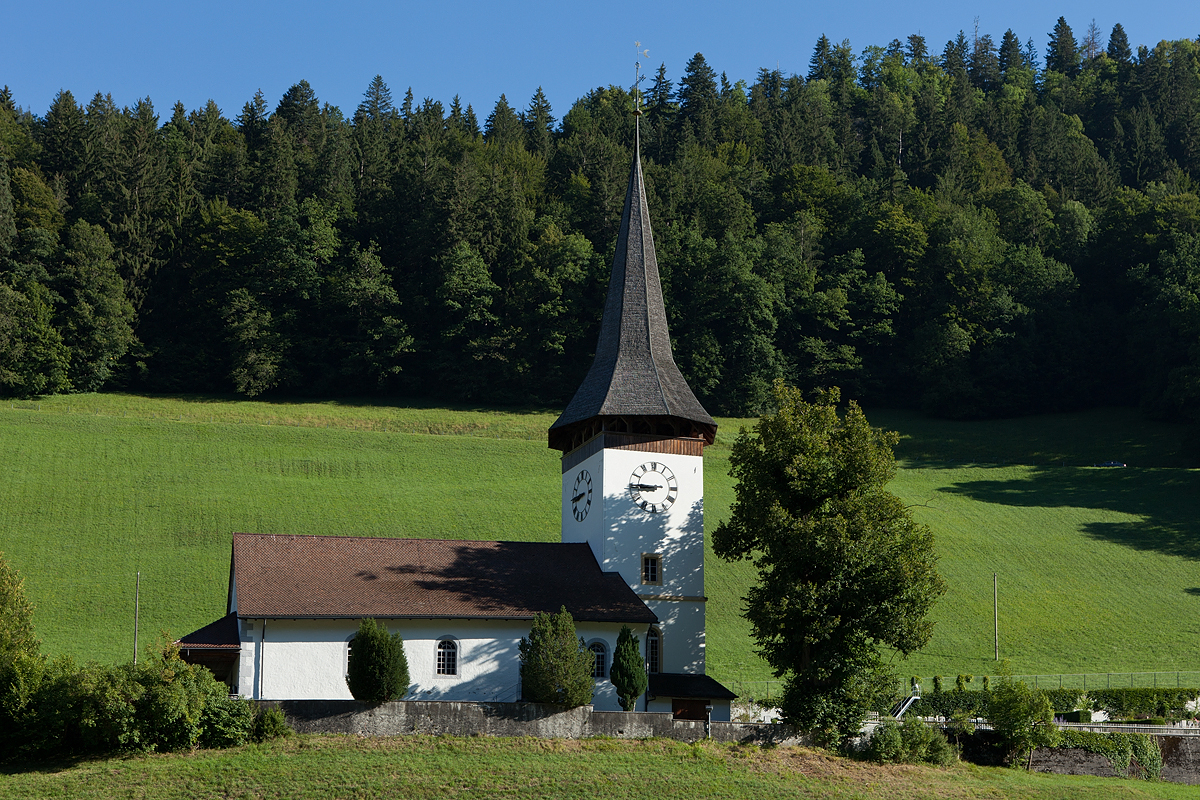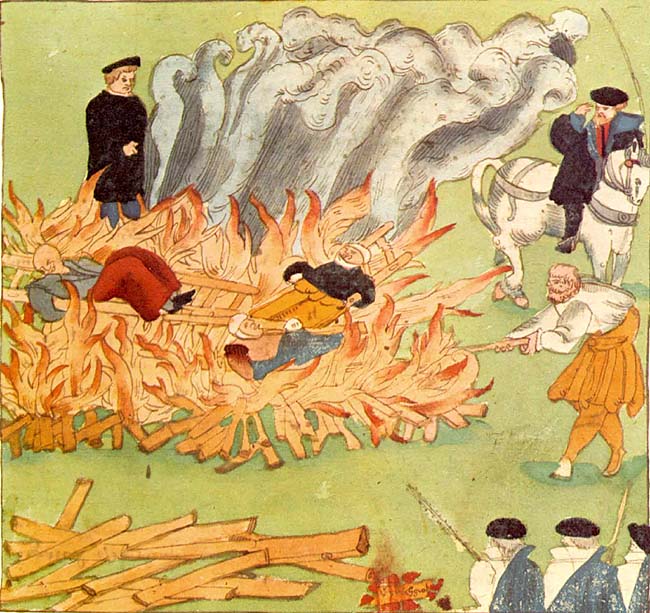|
Stedelen
Stedelen (dead c. 1400) was a man who was accused of being a witch in Boltigen, Switzerland between 1397 and 1406. Background After the harvest had failed at his village, Stedelen was accused of using black magic to destroy the crops, killing cattle and also sacrificing a black rooster on the Sabbath at a crossroad and placing a lizard under the doorway of a local church. Peter von Greyerz, the judge of Simmental between 1398–1406, was a firm believer in witchcraft, which he believed had been introduced in Simmental by a noble man called Scavius in 1375, who claimed he could transform himself to a mouse (as recorded in Johannes Nider's seminal work ''Formicarius''). Scavius was slaughtered by his enemies, but he had a student, Hoppo, who, according to Greyerz, had been the tutor of Stedelen. There are no records about Hoppo, but Stedelen from Boltigen had allegedly been made an expert on magic by Hoppo, and supposedly learned to steal manure, hay and such from others' fields ... [...More Info...] [...Related Items...] OR: [Wikipedia] [Google] [Baidu] |
Johannes Nider
Johannes Nider (c. 1380 – 13 August 1438) was a German theologian. __NOTOC__ Life Nider was born in Swabia. He entered the Order of Preachers at Colmar and after profession was sent to Vienna for his philosophical studies, which he finished at Cologne, where he was ordained. He gained a wide reputation in Germany as a preacher and was active at the Council of Constance. After making a study of the convents of his order of strict observance in Italy he returned to the University of Vienna, where in 1425 he began teaching as Master of Theology. Elected prior of the Dominican convent at Nuremberg in 1427, he successively served as ''socius'' to his master general and vicar of the reformed convents of the German province. In this capacity he maintained his early reputation of reformer and in 1431 he was chosen prior of the convent of strict observance at Basle. He became identified with the Council of Basle as theologian and legate, making several embassies to the Hussites at ... [...More Info...] [...Related Items...] OR: [Wikipedia] [Google] [Baidu] |
Formicarius
The ''Formicarius'', written 1436–1438 by Johannes Nider during the Council of Florence and first printed in 1475, is the second book ever printed to discuss witchcraft (the first book being Alphonso de Spina's ''Fortalitium Fidei''). Nider dealt specifically with witchcraft in the fifth section of the book. Unlike his successors, he did not emphasize the idea of the Witches' Sabbath and was skeptical of the claim that witches could fly by night. With over 25 manuscript copies from fifteenth and early sixteenth century editions from the 1470s to 1692, the ''Formicarius'' is an important work for the study of the origins of the witch trials in Early Modern Europe, as it sheds light on their earliest phase during the first half of the 15th century. Nider was one of the first to transform the idea of sorcery to its more modern perception of witchcraft. Prior to the fifteenth century, magic was thought to be performed by educated males who performed intricate rituals. In Nider's ' ... [...More Info...] [...Related Items...] OR: [Wikipedia] [Google] [Baidu] |
Boltigen
Boltigen is a municipality in the Obersimmental-Saanen administrative district in the canton of Bern in Switzerland. Boltigen is a mixed community, with traits both of a burgess community and a village community. Beside it, there is also a reformed evangelical Church community. The history of the community goes back to 1386 and the so-called ''Freiheitsbrief von 1386''. The community president is Hermann Maurer, since 1 January 2005. History Boltigen is first mentioned in 1276. The oldest trace of a settlement in the area is the mesolithic shelter in the ''Ranggiloch'' cave. A few Bronze Age artifacts have also been found. During the Middle Ages there were forts or castles at Simmenegg, Eichstalden and Laubegg though all three have fallen into ruin. Many of the villages and '' Bäuerten'' were founded in the Early Middle Ages and grew slowly over the following centuries. The villages and farm lands came under Bernese control partly in 1386 and completely in 1391. When Ber ... [...More Info...] [...Related Items...] OR: [Wikipedia] [Google] [Baidu] |
Witch
Witchcraft traditionally means the use of Magic (supernatural), magic or supernatural powers to harm others. A practitioner is a witch. In Middle Ages, medieval and early modern Europe, where the term originated, accused witches were usually women who were believed to have used Black magic, malevolent magic against their own community, and often to have communed with evil beings. It was thought witchcraft could be thwarted by Apotropaic magic, protective magic or counter-magic, which could be provided by cunning folk or folk healers. Suspected witches were also intimidated, banished, attacked or killed. Often they would be formally prosecuted and punished, if found guilty or simply believed to be guilty. European witch-hunts and witch trials in the early modern period led to tens of thousands of executions. In some regions, many of those accused of witchcraft were folk healers or midwife, midwives. European belief in witchcraft gradually dwindled during and after the Age of Enl ... [...More Info...] [...Related Items...] OR: [Wikipedia] [Google] [Baidu] |
Witch Trial
A witch-hunt, or a witch purge, is a search for people who have been labeled witches or a search for evidence of witchcraft. The classical period of witch-hunts in Early Modern Europe and Colonial America took place in the Early Modern period or about 1450 to 1750, spanning the upheavals of the Reformation and the Thirty Years' War, resulting in an estimated 35,000 to 50,000 executions. The last executions of people convicted as witches in Europe took place in the 18th century. In other regions, like Africa and Asia, contemporary witch-hunts have been reported from sub-Saharan Africa and Papua New Guinea, and official legislation against witchcraft is still found in Saudi Arabia and Cameroon today. In current language, "witch-hunt" metaphorically means an investigation that is usually conducted with much publicity, supposedly to uncover subversive activity, disloyalty, and so on, but with the real purpose of intimidating political opponents. It can also involve elements ... [...More Info...] [...Related Items...] OR: [Wikipedia] [Google] [Baidu] |
People Executed By Switzerland By Burning
A person ( : people) is a being that has certain capacities or attributes such as reason, morality, consciousness or self-consciousness, and being a part of a culturally established form of social relations such as kinship, ownership of property, or legal responsibility. The defining features of personhood and, consequently, what makes a person count as a person, differ widely among cultures and contexts. In addition to the question of personhood, of what makes a being count as a person to begin with, there are further questions about personal identity and self: both about what makes any particular person that particular person instead of another, and about what makes a person at one time the same person as they were or will be at another time despite any intervening changes. The plural form "people" is often used to refer to an entire nation or ethnic group (as in "a people"), and this was the original meaning of the word; it subsequently acquired its use as a plural form of ... [...More Info...] [...Related Items...] OR: [Wikipedia] [Google] [Baidu] |
Executed Swiss People
Capital punishment, also known as the death penalty, is the state-sanctioned practice of deliberately killing a person as a punishment for an actual or supposed crime, usually following an authorized, rule-governed process to conclude that the person is responsible for violating norms that warrant said punishment. The sentence ordering that an offender is to be punished in such a manner is known as a death sentence, and the act of carrying out the sentence is known as an execution. A prisoner who has been sentenced to death and awaits execution is ''condemned'' and is commonly referred to as being "on death row". Crimes that are punishable by death are known as ''capital crimes'', ''capital offences'', or ''capital felonies'', and vary depending on the jurisdiction, but commonly include serious crimes against the person, such as murder, mass murder, aggravated cases of rape (often including child sexual abuse), terrorism, aircraft hijacking, war crimes, crimes against hu ... [...More Info...] [...Related Items...] OR: [Wikipedia] [Google] [Baidu] |
Swiss Torture Victims
Swiss may refer to: * the adjectival form of Switzerland * Swiss people Places * Swiss, Missouri * Swiss, North Carolina *Swiss, West Virginia * Swiss, Wisconsin Other uses *Swiss-system tournament, in various games and sports *Swiss International Air Lines ** Swiss Global Air Lines, a subsidiary * Swissair, former national air line of Switzerland *.swiss alternative TLD for Switzerland See also * Swiss made, label for Swiss products * Swiss cheese (other) * Switzerland (other) *Languages of Switzerland, none of which are called "Swiss" *International Typographic Style, also known as Swiss Style, in graphic design *Schweizer (other), meaning Swiss in German *Schweitzer, a family name meaning Swiss in German *Swisse Swisse is a vitamin, supplement, and skincare brand. Founded in Australia in 1969 and globally headquartered in Melbourne, and was sold to Health & Happiness, a Chinese company based in Hong Kong previously known as Biostime Internatio ... [...More Info...] [...Related Items...] OR: [Wikipedia] [Google] [Baidu] |
People Executed For Witchcraft
A person ( : people) is a being that has certain capacities or attributes such as reason, morality, consciousness or self-consciousness, and being a part of a culturally established form of social relations such as kinship, ownership of property, or legal responsibility. The defining features of personhood and, consequently, what makes a person count as a person, differ widely among cultures and contexts. In addition to the question of personhood, of what makes a being count as a person to begin with, there are further questions about personal identity and self: both about what makes any particular person that particular person instead of another, and about what makes a person at one time the same person as they were or will be at another time despite any intervening changes. The plural form "people" is often used to refer to an entire nation or ethnic group (as in "a people"), and this was the original meaning of the word; it subsequently acquired its use as a plural form of per ... [...More Info...] [...Related Items...] OR: [Wikipedia] [Google] [Baidu] |
Witchcraft
Witchcraft traditionally means the use of magic or supernatural powers to harm others. A practitioner is a witch. In medieval and early modern Europe, where the term originated, accused witches were usually women who were believed to have used malevolent magic against their own community, and often to have communed with evil beings. It was thought witchcraft could be thwarted by protective magic or counter-magic, which could be provided by cunning folk or folk healers. Suspected witches were also intimidated, banished, attacked or killed. Often they would be formally prosecuted and punished, if found guilty or simply believed to be guilty. European witch-hunts and witch trials in the early modern period led to tens of thousands of executions. In some regions, many of those accused of witchcraft were folk healers or midwives. European belief in witchcraft gradually dwindled during and after the Age of Enlightenment. Contemporary cultures that believe in magic and the superna ... [...More Info...] [...Related Items...] OR: [Wikipedia] [Google] [Baidu] |
Burned At The Stake
Death by burning (also known as immolation) is an execution and murder method involving combustion or exposure to extreme heat. It has a long history as a form of public capital punishment, and many societies have employed it as a punishment for and warning against crimes such as treason, heresy, and witchcraft. The best-known execution of this type is burning at the stake, where the condemned is bound to a large wooden stake and a fire lit beneath. Effects In the process of being burned to death, a body experiences burns to exposed tissue, changes in content and distribution of body fluid, fixation of tissue, and shrinkage (especially of the skin). Internal organs may be shrunken due to fluid loss. Shrinkage and contraction of the muscles may cause joints to flex and the body to adopt the "pugilistic stance" (boxer stance), with the elbows and knees flexed and the fists clenched. Shrinkage of the skin around the neck may be severe enough to strangle a victim. Fluid shifts, e ... [...More Info...] [...Related Items...] OR: [Wikipedia] [Google] [Baidu] |
Deal With The Devil
A deal with the Devil (also called a Faustian bargain or Mephistophelian bargain) is a cultural motif exemplified by the legend of Faust and the figure of Mephistopheles, as well as being elemental to many Christian traditions. According to traditional Christian belief about witchcraft, the pact is between a person and the Devil or another demon, trading a soul for diabolical favours, which vary by the tale, but tend to include youth, knowledge, wealth, fame and power. It was also believed that some people made this type of pact just as a sign of recognising the minion as their master, in exchange for nothing. The bargain is a dangerous one, as the price of the Fiend's service is the wagerer's soul. The tale may have a moralising end, with eternal damnation for the foolhardy venturer. Conversely, it may have a comic twist, in which a wily peasant outwits the devil, characteristically on a technical point. The person making the pact sometimes tries to outwit the devil, but l ... [...More Info...] [...Related Items...] OR: [Wikipedia] [Google] [Baidu] |



_1938.jpg)


